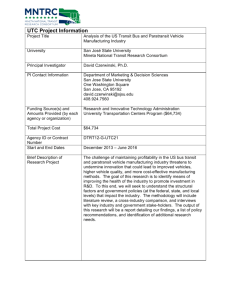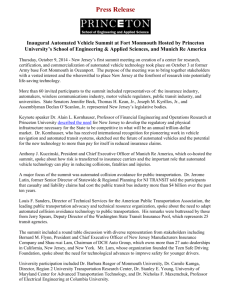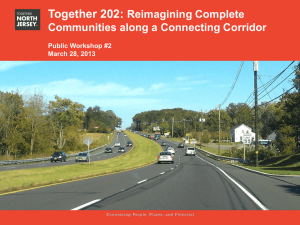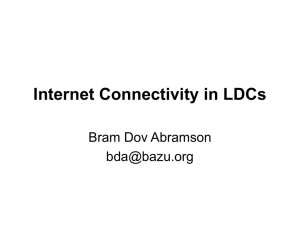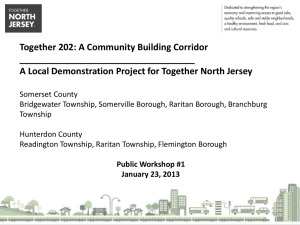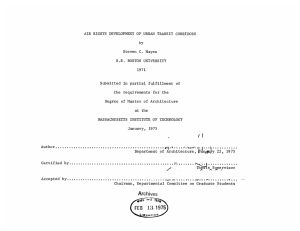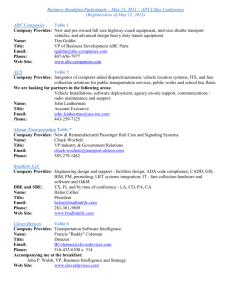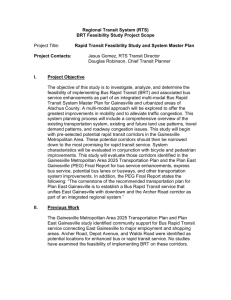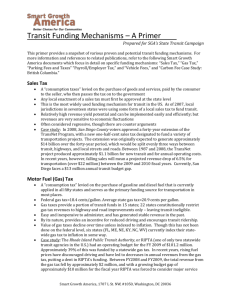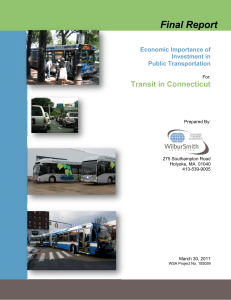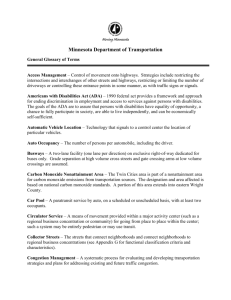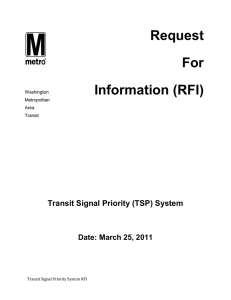Providing direct public transportation service for every origin
advertisement
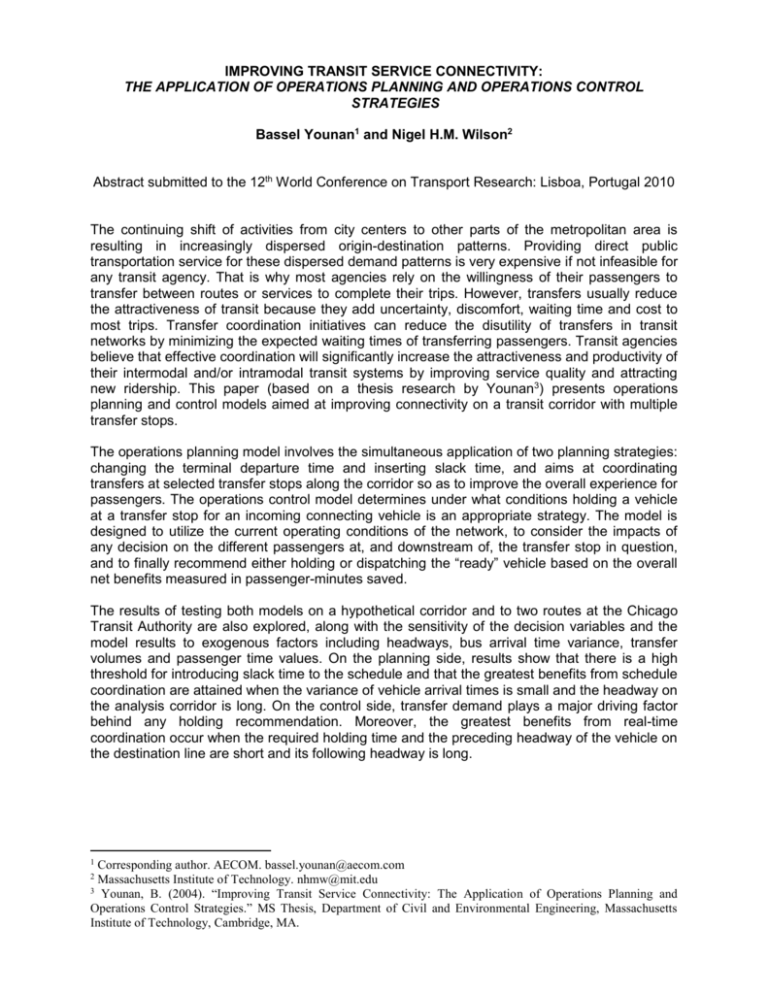
IMPROVING TRANSIT SERVICE CONNECTIVITY: THE APPLICATION OF OPERATIONS PLANNING AND OPERATIONS CONTROL STRATEGIES Bassel Younan1 and Nigel H.M. Wilson2 Abstract submitted to the 12th World Conference on Transport Research: Lisboa, Portugal 2010 The continuing shift of activities from city centers to other parts of the metropolitan area is resulting in increasingly dispersed origin-destination patterns. Providing direct public transportation service for these dispersed demand patterns is very expensive if not infeasible for any transit agency. That is why most agencies rely on the willingness of their passengers to transfer between routes or services to complete their trips. However, transfers usually reduce the attractiveness of transit because they add uncertainty, discomfort, waiting time and cost to most trips. Transfer coordination initiatives can reduce the disutility of transfers in transit networks by minimizing the expected waiting times of transferring passengers. Transit agencies believe that effective coordination will significantly increase the attractiveness and productivity of their intermodal and/or intramodal transit systems by improving service quality and attracting new ridership. This paper (based on a thesis research by Younan3) presents operations planning and control models aimed at improving connectivity on a transit corridor with multiple transfer stops. The operations planning model involves the simultaneous application of two planning strategies: changing the terminal departure time and inserting slack time, and aims at coordinating transfers at selected transfer stops along the corridor so as to improve the overall experience for passengers. The operations control model determines under what conditions holding a vehicle at a transfer stop for an incoming connecting vehicle is an appropriate strategy. The model is designed to utilize the current operating conditions of the network, to consider the impacts of any decision on the different passengers at, and downstream of, the transfer stop in question, and to finally recommend either holding or dispatching the “ready” vehicle based on the overall net benefits measured in passenger-minutes saved. The results of testing both models on a hypothetical corridor and to two routes at the Chicago Transit Authority are also explored, along with the sensitivity of the decision variables and the model results to exogenous factors including headways, bus arrival time variance, transfer volumes and passenger time values. On the planning side, results show that there is a high threshold for introducing slack time to the schedule and that the greatest benefits from schedule coordination are attained when the variance of vehicle arrival times is small and the headway on the analysis corridor is long. On the control side, transfer demand plays a major driving factor behind any holding recommendation. Moreover, the greatest benefits from real-time coordination occur when the required holding time and the preceding headway of the vehicle on the destination line are short and its following headway is long. 1 Corresponding author. AECOM. bassel.younan@aecom.com Massachusetts Institute of Technology. nhmw@mit.edu 3 Younan, B. (2004). “Improving Transit Service Connectivity: The Application of Operations Planning and Operations Control Strategies.” MS Thesis, Department of Civil and Environmental Engineering, Massachusetts Institute of Technology, Cambridge, MA. 2
